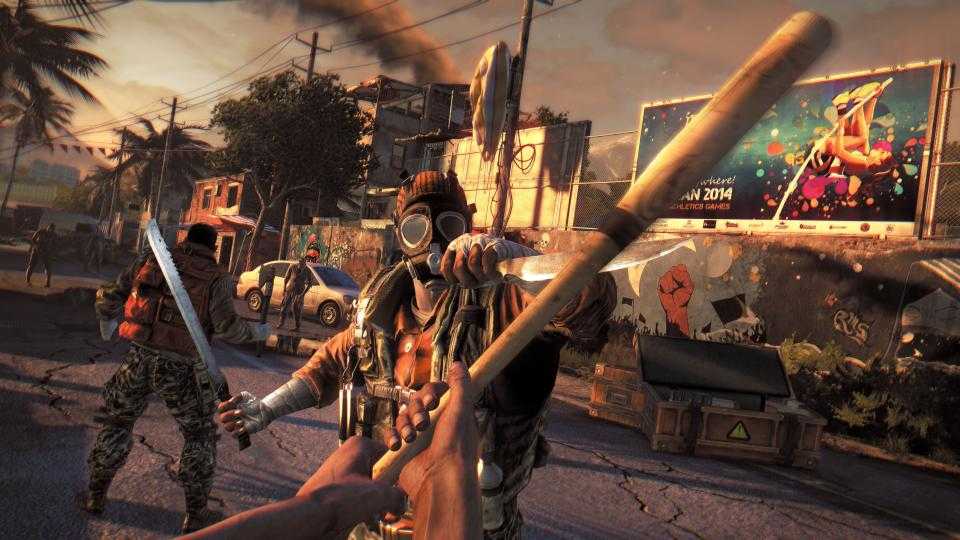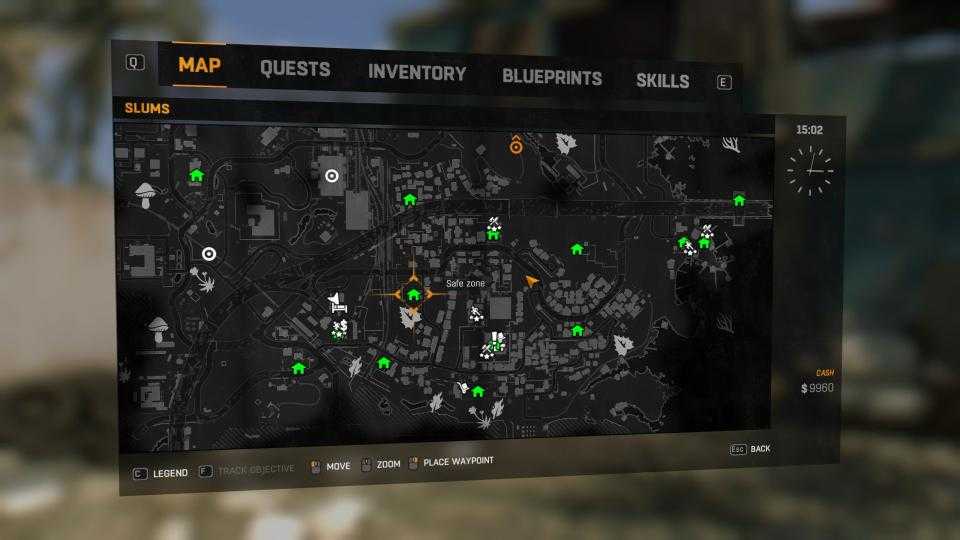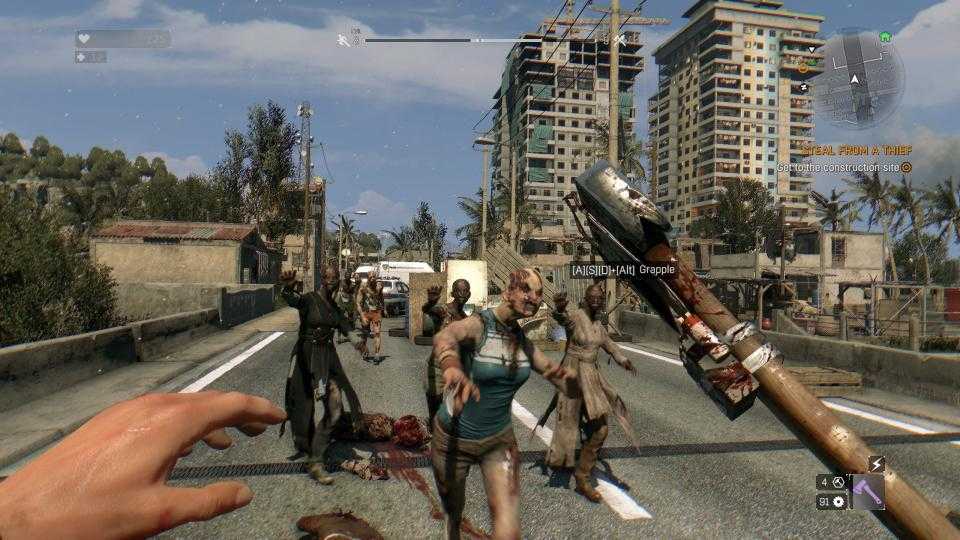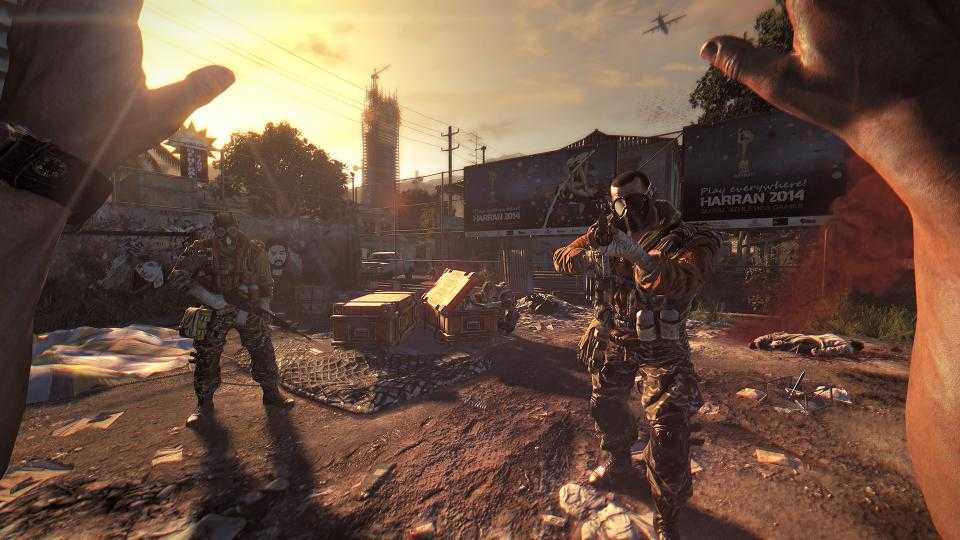It’s not unfair to say that zombies are some of the most overused tropes of modern gaming - we’ve been fighting them off for years now across a multitude of genres and it was beginning to get a little stale. Amazingly, it has fallen to developer Techland, whose previous efforts Dead Island and its expand-alone Dead Island: Riptide were distinctly average at best, to put a fresh spin on the undead formula.

On the surface, Dying Light should be little more than a rehash of Dead Island; both are first person adventures set in an exotic location, currently under siege by the living dead. Both put a heavy emphasis on melee combat, and both can be tackled co-operatively with three friends. It’s true that the downtrodden slums of Turkish city Harran aren’t as picturesque as the beaches of Dead Island’s Papua New Guinea, but a new day/night cycle and acrobatic parkour movement transform the experience.
Protagonist Kyle Crane is something of a free running expert, able to climb almost anything, vault over walls and leap across rooftops to avoid the slow-moving zombies on the streets below. Movement doesn’t feel as natural or fluid as Mirror’s Edge, with Crane hauling himself up over tall obstacles rather than gracefully scaling them, but it’s enough liven up the numerous optional objectives and fetch quests that litter the map. It gets rather crowded, but rarely reaches Ubisoft-like levels of clutter.

Scavenging for supplies, saving civilians and grabbing airdrops for your fellow survivors before bandits can steal them first is a cinch when your enemies can’t climb up to catch you, but when the sun sets it becomes a lot more dangerous to be outside alone. Deadly Volatile zombies stalk the streets; their heightened strength and speed that let them chase you up onto ledges and buildings that were previously safe, so getting spotted means a desperate race to the safety of a survivor outpost.
There’s a good reason to take the risk and try to avoid getting spotted, however, as all experience points earned at night are doubled. This helps you improve Crane’s parkour, survival and combat abilities much faster than through daylight play alone, giving you the skills to wield some of the game’s more powerful weapons.

There’s only a small selection of guns strewn throughout Harran, and using them instantly draws attention to your location. Viral zombies, akin to the 28 Days Later “runner”-style undead, will be on you in a matter of seconds, and are much more dangerous than regular shamblers. They can climb small obstacles, chase you across the map, and dodge your attacks, so it’s worth saving firearms for emergencies to stay undetected.
Instead, you’ll need to rely on an array of improvised melee weapons to avoid drawing too much attention. With any zombie attack dealing lots of damage, any very close encounter - whether it be a Volatile or simply a crowd of regular zombies - carries a risk. Crane might have a mean swinging arm, but all weapons eventually break after too much use; wear one down enough at the wrong moment and you’ll quickly get swamped by attackers. combat feels visceral, with zombies recoiling realistically from your swings - particularly once you unlock more damaging power attacks and context-sensitive finishing moves.
You can upgrade your items with modifications and elemental effects to deal more damage, and repair them a limited number of times before they inevitably break, but you’ll constantly be on the lookout for replacement gear. It’s this need to restock your inventory that forces you back out into the danger zone, with each trip carrying equal amounts of danger and excitement.

It’s a shame that Dying Light’s story can’t match the highs of these random encounters and experiences. Crane’s mission to liberate a file from a local warlord that may hold a cure to the outbreak is wholly unsatisfying; his bosses want the file at all costs, even if it means sacrificing civilians, but you’re never given the option to reject the dubious moral decisions he’s forced to make. The supporting cast of survivors are also very clichéd, with an inexplicable range of accents for a city off the coast of Turkey.
This could be forgiven if the main story missions at least had some variety, but for the most part they all follow a linear structure. Although Crane’s abilities improve and expand as you play, missions rarely venture away from simple fetch quests, often with a a fight or a climb to the top of a relay tower waiting for you at the end. Some missions can only be taken on at night, which adds to the tension, but you rarely have to change up your tactics to complete them.
The saving grace is how Dying Light continuously throws new enemies into the mix as your abilities improve, meaning you never feel completely safe. As soon as you’re strong enough to take on a group of zombies, new infected that explode when you get close, or stay back and attack you with globs of flying acid appear. This constantly evolving gameplay ensures there’s always something new waiting for you, even after you’ve learned every one of Harran’s backstreets and alleys.
It helps too that Harran looks gorgeous during the day; the latest version of Techland’s Chrome engine has a stunning lighting model, with god rays shining through trees and clouds moving convincingly across the sky. The city may be bathed in sunlight most of the time, but it can impress in the dark as well, as lightning illuminates your surroundings when a torrential rain storms rolls in. Unfortunately player and zombie models don’t have the same level of sheen, but Dying Light is still demanding enough to tax mid-range graphics cards at 1080p.
Throw in the now obligatory smartphone companion app, which unlocks items to use in the main game, and the asymmetrical ‘Be the Zombie” multiplayer mode, which lets you invade other players’ games as a Volatile zombie complete with jumps that can leap entire buildings and long range tendril attacks, and there’s well over 50 hours of gameplay here.
Dying Light is at its best when you stray off the linear storyline and look for your own adventures. Getting surrounded by a pack of zombies while trying to liberate a decaying safehouse, armed only with some firecrackers to distract your attackers, or vaulting from car to car to cross an overpass littered with the undead is brilliant fun. This lack of structure won’t appeal to everyone, but if you’re after a new take on the tired zombie genre, it’s a welcome break from the norm.
|
SPECIFICATIONS |
|
Available formats |
PC, Xbox One, PS4 |
|
OS Support |
Windows 7, Windows 8.1 64-bit |
|
Minimum CPU |
3.3GHz dual-core Intel, 3.5GHz quad-core AMD |
|
Minimum GPU |
AMD Radeon HD 6870, Nvidia GeForce GTX 560 |
|
Minimum RAM |
4GB |
|
Hard disk space |
40GB |
|
Details |
www.dyinglightgame.com |
|
Product code |
PCDY10 |